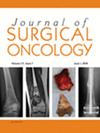Impact of Patient Income and Insurance on Postoperative Mortality After Total Pancreatectomy for Pancreatic Neoplasms
Abstract
Background
Total pancreatectomies (TP) are rare high-risk operations requiring complex postoperative management. Hospital factors are known to impact pancreatectomy outcomes, but the role of patient socioeconomic status on TP outcomes remains poorly understood. This retrospective study assesses the impact of income and insurance on 90-day mortality after TP.
Methods
Adults (≥ 18 years) who underwent TP for pancreatic neoplasms were identified in the National Cancer Database (2008–2022). Kaplan–Meier analysis assessed 90-day survival stratified by income and insurance. Univariable and multivariable Cox proportional hazards analyses were performed. Multivariable Cox models adjusting for clinical, oncologic, and facility characteristics assessed the impact of income and insurance on postoperative survival.
Results
Among 11 321 patients, 90-day mortality was 8.0%. Facility volume and Commission on Cancer designation were associated with 90-day mortality (p < 0.001), as were patient insurance and income (p < 0.01). High-volume facilities had more male, non-Hispanic White, privately insured, and high-income patients than low-volume facilities (p < 0.001). Ninety-day survival differed significantly between high- and lower-income patients with each insurance type (p < 0.001). On adjusted Cox analysis, high income was associated with better 90-day survival for patients with Medicaid or no insurance (HR 0.42, p = 0.049) and Medicare (HR 0.77, p = 0.008). Ninety-day mortality did not differ between high- and lower-income patients with private insurance (HR 1.09, p = 0.597). Private insurance was associated with better 90-day survival versus patients with Medicaid or no insurance among lower-income patients (HR 0.57, p = 0.002), but not high-income patients (HR 1.43, p = 0.413).
Conclusions
Patient insurance and income influence 90-day mortality after TP, independent of clinical and facility factors. These findings suggest that financial burdens meaningfully impact postoperative recovery following TP, highlighting the need for careful preoperative screening and planning to ensure adequate support for at-risk patients.



 求助内容:
求助内容: 应助结果提醒方式:
应助结果提醒方式:


